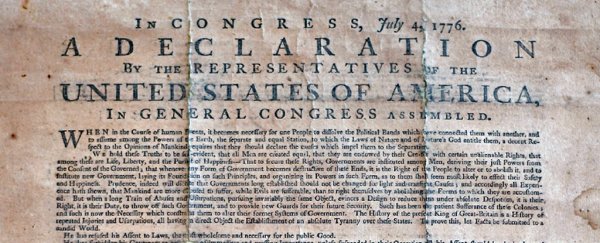What happened on July 4, 1776? Not what you might think.
On that historic day more than 200 years ago, the Continental Congress adopted the Declaration of Independence. But it would be weeks before the Founding Fathers actually signed the handwritten document that now rests in the National Archives in Washington.
In the meantime, official broadsides - the public service announcements of the day -were printed and posted on the doors of courthouses across the colonies.
One of the few surviving broadsides of the Declaration of Independence is now on view in the John M Olin Library at Washington University in St Louis.
This episode of the podcast "Hold That Thought" explores the broadside's history:
Printed by Solomon Southwick for the people of Rhode Island, the declaration proclaims: "All men are created equal, that they are endowed by their Creator with certain unalienable Rights, that among these are Life, Liberty and the pursuit of Happiness."
"To read this broadside would have been a momentous occasion," says David Konig, professor of history in Arts & Sciences and of law in the School of Law at Washington University in St Louis.
"You can imagine the people of the time gathering to read and debate the declaration. Broadsides were the way the government communicated with the people."
Source: Washington University in St Louis
This article was first published on Futurity. Read the original article.

